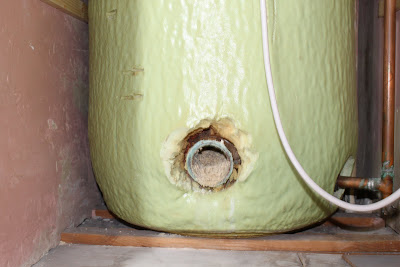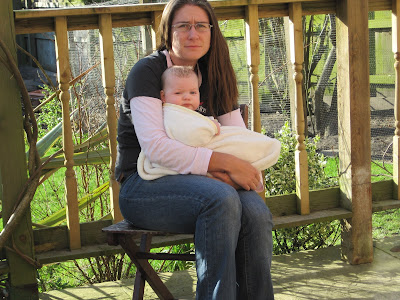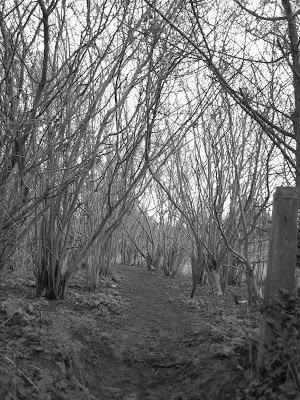But the water now ran too cold. Barely warmer than tepid. (I love the word 'tepid' I think it should be applied to so much more than water temperature. Washed out colours & tasteless food for example). Ju asked her husband to turn the water back up a little bit. After a couple of days of procrastinating he finally turned the water up again.
I know what you're thinking. Too hot again, right?
Actually, no. We lost even the crappy half-arsed warm water of a cylinder not trying to heat the water to the type of water which conveyed the cool disdain of a cylinder not even bothering to heat the water because, well, it's just not interested anymore.
As the closest thing to an electrician in the house it was decided I would go and have a look to see if I could work out what was wrong (sans multimeter, dammit!). Ju's Husband showed me where the thermostat and heating element were and I had a bit of a look. We turned the knob for a bit and listened to the clicking of the switch. When fault-finding an unfamiliar electrical system on an aircraft with little guidance available, one of the methods we like to use is to compare the operation of the faulty system with a 'known good' system (ie, does the system on another aircraft exhibit the same characteristics?). Luckily for me, this hot water cylinder had another heating element and thermostat closer to the top of the tank.
I turned that knob for a bit, but the clicking sounds it made were a little too similar to be conclusive.
"Oh hello!"
Ju's Husband's voice sounded triumphant. As I had been playing with the upper (boost) element, he had continued investigating the lower (main) one. Lo and behold! It was clearly burnt out.
Another was bought. I installed it. Clickety click.
A day (and several thermostat settings) later and we still didn't have hot water. It was getting a bit obvious the heater must be out too. At the least, something had to cause that little burn-out. I hated to have to admit it, but it was time to call in the plumber.
The block of houses that Ju and her family live in was built in 1952 by the council.
This means the hot water cylinder is potentially fifty eight years old. It's probably not, but we do have very strong evidence it's a lot older than six. It's possibly around ten.
The water around here has a lot of limescale in it. (We're about half an hour's drive from Bath. Think limestone, think mineral water, and if you like, think of fat Romans having orgies in large public baths.) Anyway, most electric jugs come with filters for the water. The limescale leaves a skin over one's cup of tea which breaks up in a way that makes me think of the antarctic ice-shelf breaking up. Interestingly, although jugs come with filters to filter out minerals before boiling them (in NZ it's usually one or the other) the hot water cylinders don't. Can you imagine what happens to the hot water cylinders in this town? Scroll down then, and see...
THIS!


And THIS is what all those minerals will do to the element:


------------------------------------------------------------------------------------------
Ju's Husband's Mum resurrected a highchair for Ju's Daughter to use when she gets big enough for one. Since the highchair has been in storage for a while, it got cleaned up and sterilised. I was intrigued with the information on the box of "Milton complete protection" sterilisation tablets.
First, here is a very serious sounding warning:

But look, it's okay Mum - they're fine to use for baby's food dishes and utensils:
Yeah, yeah, yeah. The picky amongst you will be quick to point out the warning is for undiluted tablets. I don't care, I still think it's funny. Oh by the way, did you notice that part of the product name that says -cyan- ? I don't know about you, but to me that sounds suspiciously as though it is a key ingredient in cyanide.
I'm just saying.




















